Even the world’s top security experts can’t invent something that thwarts every kind of cyberattack. Because security advancement never stops. And I’m not talking about security tool advancement—I’m talking about the progress in anti-security tactics that black hats use to steal and sell our most sensitive information.
These days, cyberattacks can be happen via click, open or even by pressing “play.” How can you stay safe?
“If you’re an everyday computer user, a vulnerability can pose serious security risks because exploit malware can infect a computer through otherwise harmless web browsing activities, such as viewing a website, opening a compromised message or playing infected media.” Course Hero
Thankfully, it’s not all bad news. In this post, I’m going to share several statistics about cybersecurity, malware and cyberattacks—then I’m going to share how your firm can thwart the attacks using technology and a little common sense.
Cyberattack prevention is everyone’s responsibility
Who are cyberattackers after? Everyone. The black hats know that the more people targeted, the higher the chances the attack will be a success.
Hackers have adopted the same mentality of an old-school smile-and-dial-phone salesman: The harder they hit the phones, the more likely it is someone will pick up.
But just because you’re the one they’re calling doesn’t mean you need to buy what they’re selling. In fact, the onus is partly on you not to fall victim to an attack. Keeping yourself informed about security is the best line of defense against cyberthreats.
Why? Because human error is still the No.1 security threat to businesses.
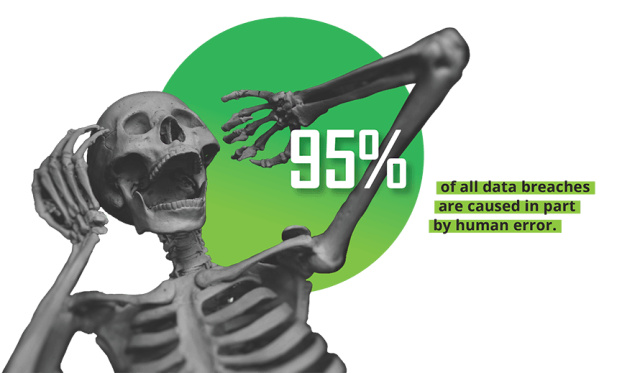
“The conversation about data leakage has flipped from ‘if’ to ‘when’ a company will be breached by malicious actors…The fight against cyber breaches continues to depend on an organization’s ability to train and adapt its members’ behaviors to protect against actions such as credential theft, social engineering and user error.” – Masha Arbisman, Behavioral Engineering Manager, Verizon Media
How to protect yourself from hackers
Did you know that 56% of Americans don’t know what to do in the event of a data breach? Don’t contribute to that statistic. Even better, figure out ways to mitigate a cyberthreat and avoid a breach altogether by educating yourself.
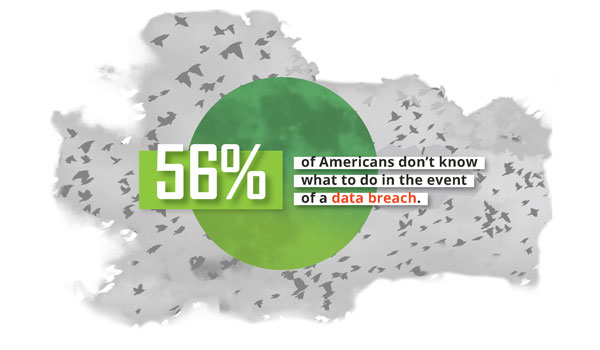
Here are a few ways you can protect yourself from cybersecurity threats, but be sure to check out comprehensive programs like Right Networks Security Awareness Training:
- Keep passwords secret; keep accounts safe. “Set up a separate account for each user (including any contractors needing access) and require that strong, unique passwords be used for each account.” Nist.gov
- Don’t install programs unless you have explicit approval to do so. Nist.gov
- Threats also come in the form of natural disasters. And if the power suddenly goes out, you don’t want your infrastructure zapped; check to make sure “computers and critical network devices are plugged into a UPS” and “plug less sensitive electronics into surge protectors.” Nist.gov
- Report sketchy-seeming emails using Outlook’s “Phish Alert” button. Is the email addressed to just you or to everyone at your company? Is the email asking you to review something you wouldn’t normally review? Is there a sense of urgency? A financial component? Something attached or linked? Report it. And if you know the person being impersonated, give them a call to make sure they know their email may have been compromised.
Cybersecurity challenges (and costly outcomes)
Getting secure isn’t a one-and-done task.
It’s up to you, me and all employees to stay informed about cyberthreats. It’s up to a business—no matter the size of that business—to mitigate the attack risk by deploying antivirus, anti-malware and multifactor authentication, among other safeguards. Setting up security programs and policies will lessen the chances of employees even seeing a malicious email.
The alternative to prioritizing security is becoming a data breach victim. A small investment today could save a business millions tomorrow.
Especially since the average total cost of a data breach in 2021 has increased from $3.86 million vs. $4.24 million—the largest margin in seven years. (IBM.com)
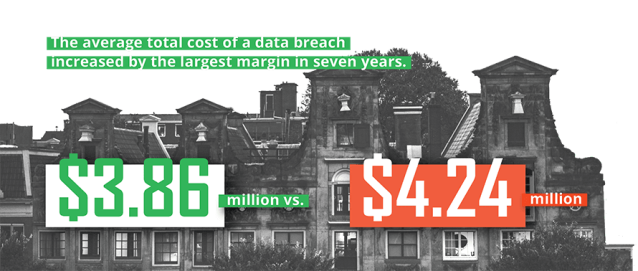
What’s worse? The financial industry is more likely to be a target because hackers know that CPA firms hold more personal information than a lot of other businesses.
44% of security breaches involve customers’ Personally Identifiable Information (PII). (IBM.com)
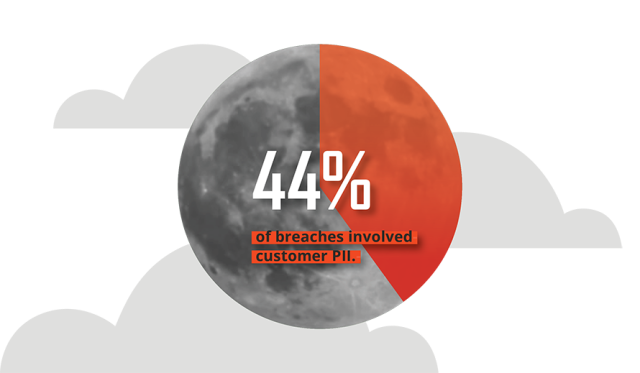
“[PII is] information that can be used to distinguish or trace an individual’s identity, either alone or when combined with other information that is linked or linkable to a specific individual…such as name, social security number, date and place of birth, mother’s maiden name, or biometric records…” NIST.gov
Malicious hackers also know that many of these businesses can’t regularly train staff on the latest attack trends; they also know it’s extremely unlikely that a 15-person firm would have a member dedicated to monitoring cyber threats.
The IRS understands the major risk those handling taxpayer data face (and the costlier outcomes) and has created multiple tools as part of its Security Summit for firms to use to protect client data.
The financial industry’s average total data breach cost is $1.48 million higher than the global average. (IBM.com)
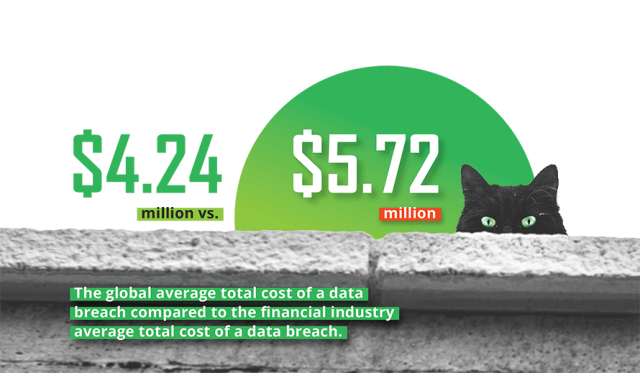
Get help protecting your small business—find out how.
Small budgets ≠ small security
The most effective way to secure your sensitive, business-critical data is by adopting a holistic approach to your security:
- Step 1: Start using the cloud: Make full-featured applications, software and data accessible in real-time from any device, recognize and neutralize cyber threats before they cause irreparable damage to your system, automate backups and store them in secure, redundant facilities… and so much more.
- Step 2: Secure your local computers and laptops: Sometimes, work takes you outside the cloud, and in those cases, you need to ensure your local files stay secure, too. Check out solutions that offer the same level of security that the cloud provides for local devices.
- Step 3: Educate yourself (and your employees) about the latest cyberattacks: As evidenced by that staggering statistic (85% of data breaches are due to human error), employee education is the best way to prevent a data breach from ever happening. Ensure employees are trained regularly about the latest cyberthreats with a comprehensive security awareness training solution.
Don’t let these spooky stats keep you up tonight. Schedule an appointment to learn more about our security solutions today.



